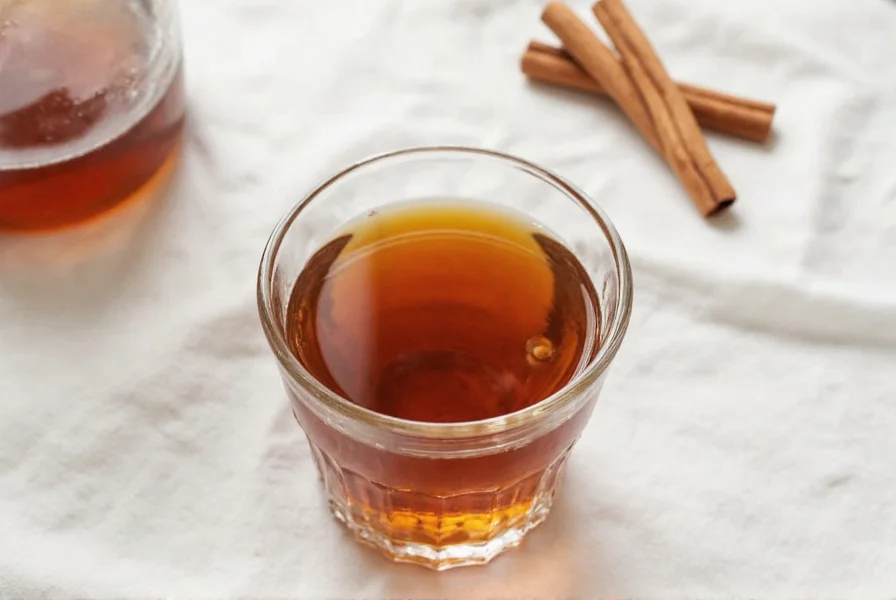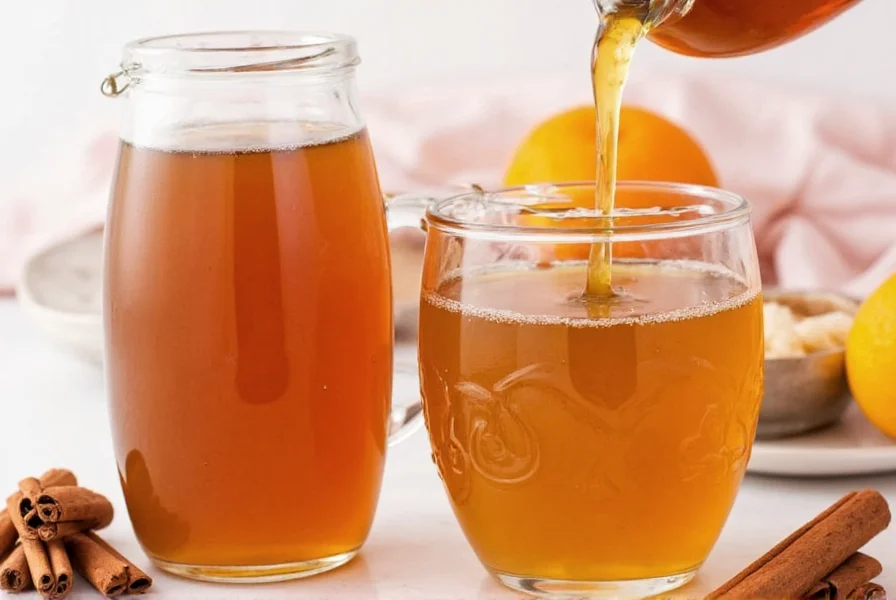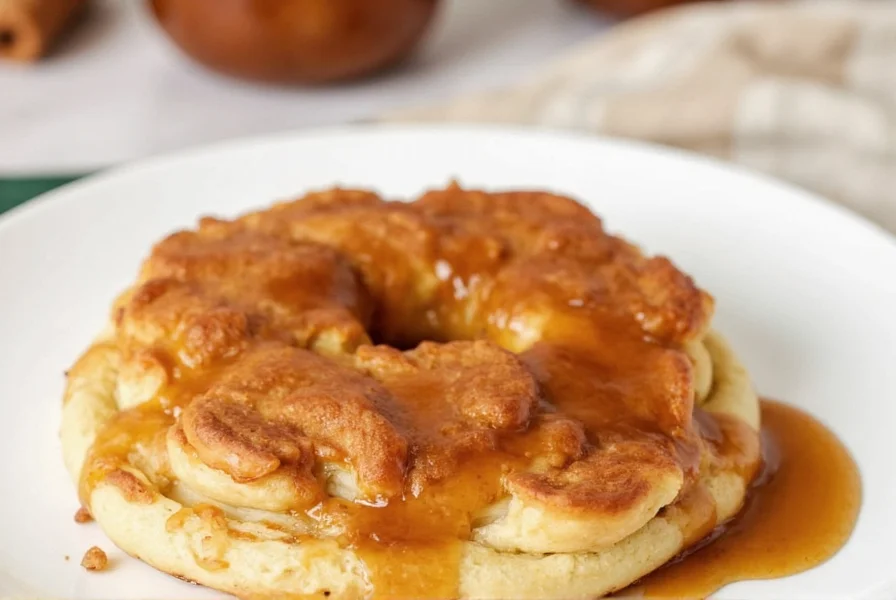Creating your own cinnamon syrup at home is simpler than you might think and far superior to store-bought versions. This versatile sweetener elevates everything from morning coffee to craft cocktails and baked goods. Unlike commercial syrups that often contain preservatives and artificial flavors, this homemade cinnamon syrup recipe delivers pure, authentic spice notes without any additives.
Why This Cinnamon Simple Syrup Recipe Works
The magic happens through gentle simmering, which extracts cinnamon's essential oils without burning them. Using whole cinnamon sticks rather than ground cinnamon prevents cloudiness and sediment in your finished syrup. The 1:1 sugar-to-water ratio creates the ideal viscosity for both mixing and storage. This method produces a balanced syrup that's sweet but not cloying, with pronounced cinnamon flavor that doesn't overpower other ingredients.
Ingredients for Perfect Cinnamon Syrup
Quality ingredients make all the difference in this straightforward recipe. Here's what you'll need:
| Ingredient | Amount | Why It Matters |
|---|---|---|
| Granulated sugar | 1 cup | Creates proper syrup consistency; dissolves completely during simmering |
| Water | 1 cup | Purified water prevents off-flavors; tap water works if boiled first |
| Cinnamon sticks | 3-4 (7-8 inches each) | Whole sticks provide cleaner flavor and prevent cloudiness versus ground cinnamon |

Step-by-Step Cinnamon Simple Syrup Instructions
Follow these simple steps for foolproof cinnamon syrup every time:
- Combine water and sugar in a small saucepan over medium heat
- Add cinnamon sticks and bring to a gentle simmer (do not boil vigorously)
- Reduce heat to low and simmer uncovered for 15 minutes
- Remove from heat and let cool completely in the saucepan (about 1 hour)
- Strain through a fine-mesh sieve into a clean container
- Transfer to an airtight bottle or jar
Proper Storage Techniques
Correct storage ensures your homemade cinnamon syrup maintains quality:
- Always use sterilized glass bottles or jars with tight-sealing lids
- Refrigerate immediately after cooling
- Shelf life: 2-3 weeks in the refrigerator
- Do not freeze, as this alters the syrup's texture and flavor profile
- Check for cloudiness or off smells before each use
Creative Uses for Cinnamon Syrup
This versatile syrup enhances both sweet and savory applications:
- Cocktails: Add ½ oz to Old Fashioneds, Manhattans, or whiskey sours
- Coffee & Tea: Replace simple syrup in lattes and chai for natural sweetness
- Baking: Brush over cakes or use in glazes for pastries
- Breakfast: Drizzle over pancakes, oatmeal, or yogurt
- Culinary: Enhance apple dishes, roasted carrots, or sweet potato recipes
Troubleshooting Common Issues
Fix these frequent cinnamon syrup problems:
- Cloudy syrup: Caused by using ground cinnamon or boiling too vigorously. Solution: Always use sticks and gentle simmer.
- Weak flavor: Simmer longer (up to 20 minutes) or add an extra cinnamon stick.
- Crystallization: Sugar recrystallizes if syrup cools too quickly. Solution: Reheat gently and add 1 tsp lemon juice.
- Mold growth: Usually from improper storage. Always use clean utensils and refrigerate promptly.
Delicious Variations to Try
Customize your cinnamon simple syrup with these easy modifications:
- Vanilla-cinnamon: Add 1 split vanilla bean during simmering
- Spiced: Include 3 whole cloves and 1 star anise with the cinnamon
- Lemon-cinnamon: Add 2 strips of lemon zest (no pith) for brightness
- Hot cinnamon: Infuse with 1 small dried chili pepper for spicy kick
- Maple-cinnamon: Replace ¼ cup sugar with pure maple syrup

Frequently Asked Questions
Can I use ground cinnamon instead of sticks in this recipe?
While possible, ground cinnamon creates cloudy syrup with sediment. Whole sticks produce clearer syrup with more consistent flavor. If you must use ground cinnamon, use 1½ teaspoons and double-strain through cheesecloth after cooling.
How long does homemade cinnamon syrup last?
Properly stored in a sterilized container in the refrigerator, homemade cinnamon syrup stays fresh for 2-3 weeks. Always check for cloudiness, off smells, or mold before using. The high sugar content acts as a natural preservative but refrigeration is essential for food safety.
Why did my cinnamon syrup crystallize?
Crystallization occurs when sugar molecules re-form crystals, usually from rapid cooling or impurities. To fix crystallized syrup, gently reheat it with 1 teaspoon of lemon juice or cream of tartar, which interferes with crystal formation. For prevention, ensure complete sugar dissolution during initial heating and cool gradually at room temperature.
Can I make this cinnamon syrup recipe without sugar?
Traditional simple syrup requires sugar for proper consistency and preservation. Sugar substitutes like honey or maple syrup alter flavor and may ferment. For reduced sugar options, try making a cinnamon-infused simple syrup with ¾ cup sugar, or create a cinnamon extract for flavoring without sweetness.
What's the best cinnamon variety for syrup?
Ceylon cinnamon ("true" cinnamon) offers delicate, complex flavor, while Cassia cinnamon provides stronger, more familiar spice notes. For most applications, Cassia works well due to its robust flavor that holds up in syrup. If using Ceylon, increase to 5-6 sticks for equivalent flavor intensity. Always choose fresh, tightly rolled sticks for best results.











 浙公网安备
33010002000092号
浙公网安备
33010002000092号 浙B2-20120091-4
浙B2-20120091-4